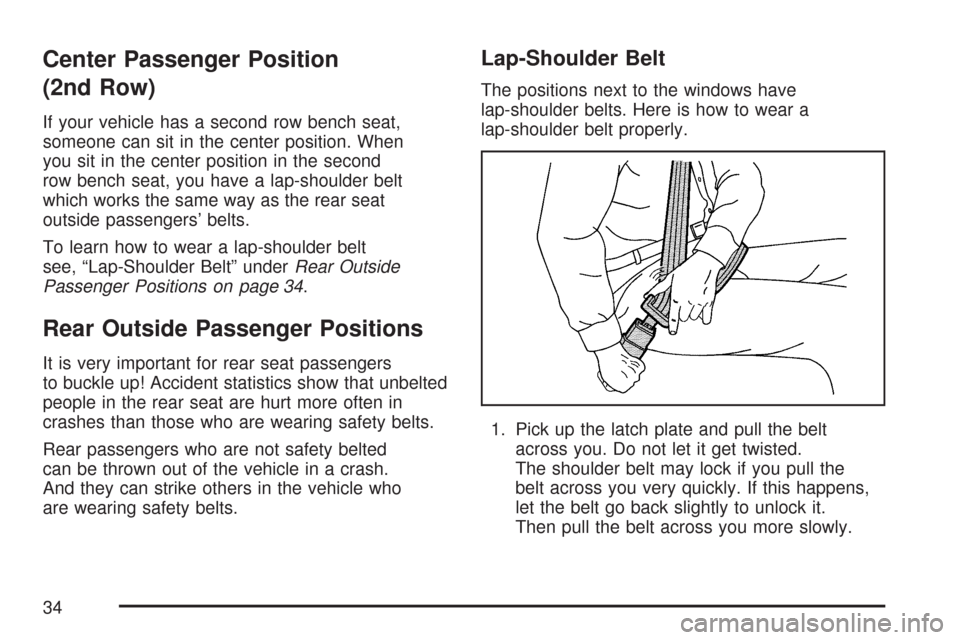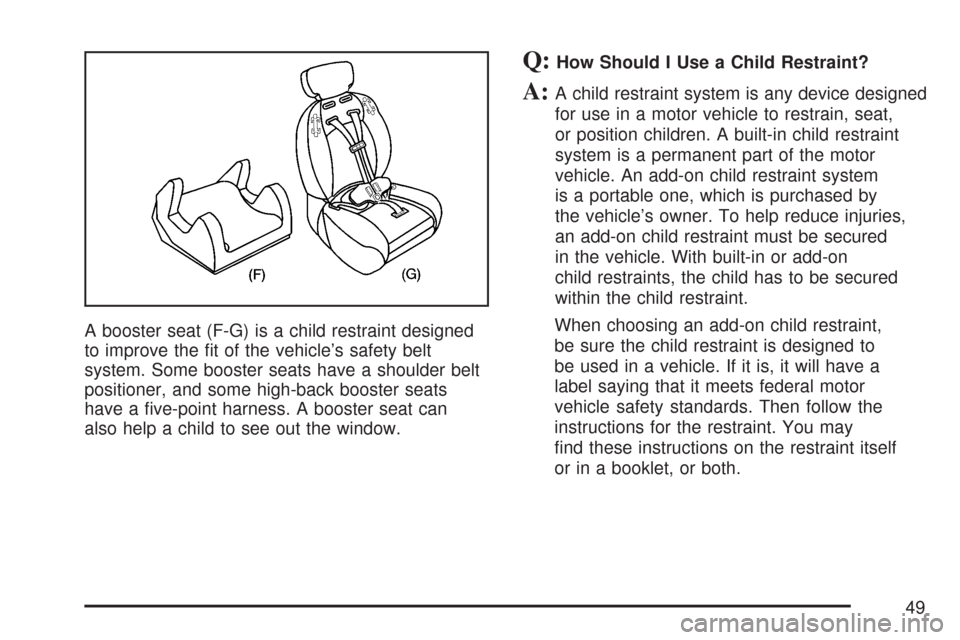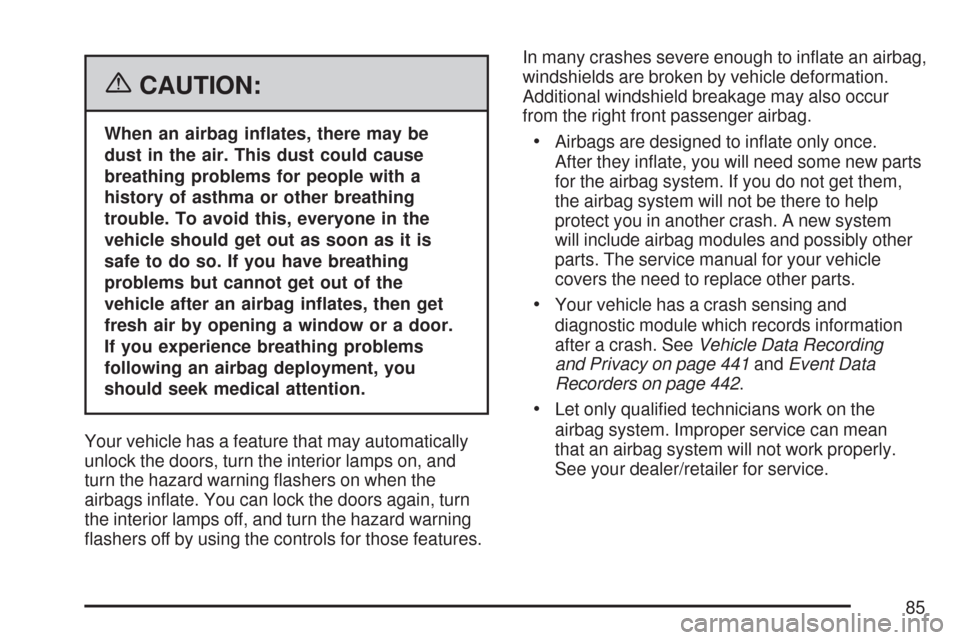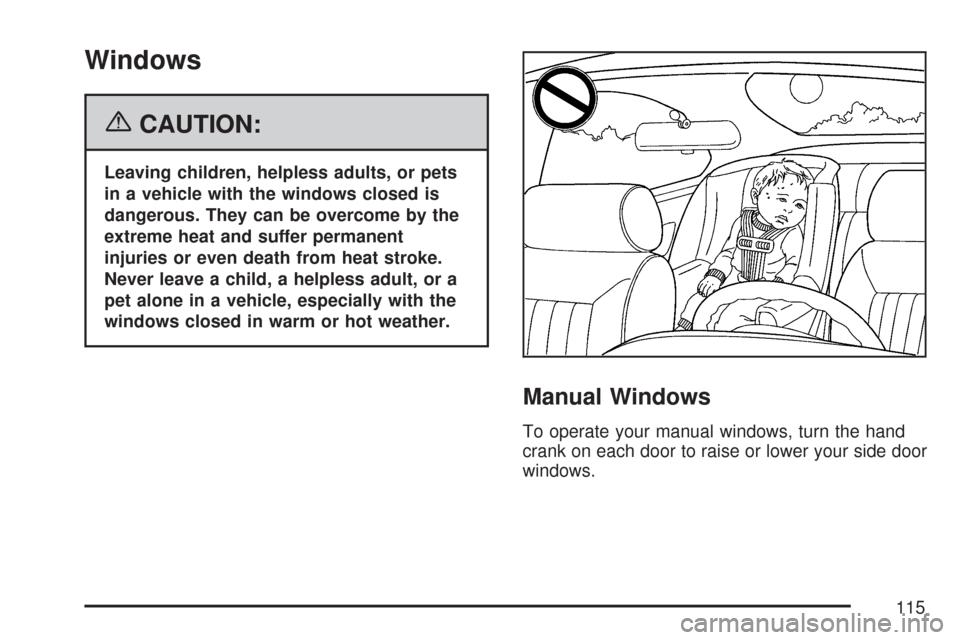2007 CHEVROLET EXPRESS PASSANGER window
[x] Cancel search: windowPage 1 of 458

Seats and Restraint Systems
....................... 7
Front Seats
.............................................. 9
Rear Seats
............................................. 13
Safety Belts
............................................ 17
Child Restraints
...................................... 41
Airbag System
........................................ 78
Restraint System Check
......................... 98
Features and Controls
.............................. 101
Keys
..................................................... 102
Doors and Locks
.................................. 108
Windows
............................................... 115
Theft-Deterrent Systems
....................... 118
Starting and Operating Your Vehicle
..... 119
Mirrors
.................................................. 134
Storage Areas
...................................... 139
Instrument Panel
....................................... 141
Instrument Panel Overview
................... 144
Climate Controls
................................... 160
Warning Lights, Gages, and
Indicators
.......................................... 166
Audio System(s)
................................... 187Driving Your Vehicle
................................. 227
Your Driving, the Road, and Your
Vehicle
.............................................. 228
Towing
................................................. 266
Service and Appearance Care
.................. 287
Service
................................................. 290
Fuel
...................................................... 292
Checking Things Under the Hood
......... 300
All-Wheel Drive
..................................... 336
Rear Axle
............................................. 337
Front Axle
............................................ 338
Noise Control System
........................... 338
Bulb Replacement
................................ 340
Windshield Wiper Blade
Replacement
..................................... 344
Tires
..................................................... 346
Appearance Care
.................................. 382
Vehicle Identification
............................. 392
Electrical System
.................................. 393
Capacities and Specifications
................ 398
2007 Chevrolet Express Owner ManualM
1
Page 15 of 458

7. For the first row
rear seat, stow the
safety belt latch
by attaching the clip
on the safety belt
latch to the trim
just inside the
side door.
For the remaining rear seats, stow the safety
belt latch plate on the clip at the window trim.
Replacing the Rear Seats
{CAUTION:
A seat that is not locked into place
properly can move around in a collision
or sudden stop. People in the vehicle
could be injured. Be sure to lock the
seat into place properly when installing it.
{CAUTION:
A safety belt that is improperly routed,
not properly attached, or twisted will not
provide the protection needed in a crash.
The person wearing the belt could be
seriously injured. After raising the rear
seatback, always check to be sure that
the safety belts are properly routed and
attached, and are not twisted.
1. Position the seat into the open slots in
both rails. Push the seat forward in the
rail, hooking both seat bases onto the
pins inside of the rails.
2. To install the locking pins at the rear of the
seat base, locate the hole in the rail for the
pin. It is found on the inboard side of the seat.
If the vehicle has floor mats, pull the flap
that has been cut into the mat.
15
Page 34 of 458

Center Passenger Position
(2nd Row)
If your vehicle has a second row bench seat,
someone can sit in the center position. When
you sit in the center position in the second
row bench seat, you have a lap-shoulder belt
which works the same way as the rear seat
outside passengers’ belts.
To learn how to wear a lap-shoulder belt
see, “Lap-Shoulder Belt” underRear Outside
Passenger Positions on page 34.
Rear Outside Passenger Positions
It is very important for rear seat passengers
to buckle up! Accident statistics show that unbelted
people in the rear seat are hurt more often in
crashes than those who are wearing safety belts.
Rear passengers who are not safety belted
can be thrown out of the vehicle in a crash.
And they can strike others in the vehicle who
are wearing safety belts.
Lap-Shoulder Belt
The positions next to the windows have
lap-shoulder belts. Here is how to wear a
lap-shoulder belt properly.
1. Pick up the latch plate and pull the belt
across you. Do not let it get twisted.
The shoulder belt may lock if you pull the
belt across you very quickly. If this happens,
let the belt go back slightly to unlock it.
Then pull the belt across you more slowly.
34
Page 49 of 458

A booster seat (F-G) is a child restraint designed
to improve the fit of the vehicle’s safety belt
system. Some booster seats have a shoulder belt
positioner, and some high-back booster seats
have a five-point harness. A booster seat can
also help a child to see out the window.
Q:How Should I Use a Child Restraint?
A:A child restraint system is any device designed
for use in a motor vehicle to restrain, seat,
or position children. A built-in child restraint
system is a permanent part of the motor
vehicle. An add-on child restraint system
is a portable one, which is purchased by
the vehicle’s owner. To help reduce injuries,
an add-on child restraint must be secured
in the vehicle. With built-in or add-on
child restraints, the child has to be secured
within the child restraint.
When choosing an add-on child restraint,
be sure the child restraint is designed to
be used in a vehicle. If it is, it will have a
label saying that it meets federal motor
vehicle safety standards. Then follow the
instructions for the restraint. You may
find these instructions on the restraint itself
or in a booklet, or both.
49
Page 85 of 458

{CAUTION:
When an airbag in�ates, there may be
dust in the air. This dust could cause
breathing problems for people with a
history of asthma or other breathing
trouble. To avoid this, everyone in the
vehicle should get out as soon as it is
safe to do so. If you have breathing
problems but cannot get out of the
vehicle after an airbag in�ates, then get
fresh air by opening a window or a door.
If you experience breathing problems
following an airbag deployment, you
should seek medical attention.
Your vehicle has a feature that may automatically
unlock the doors, turn the interior lamps on, and
turn the hazard warning flashers on when the
airbags inflate. You can lock the doors again, turn
the interior lamps off, and turn the hazard warning
flashers off by using the controls for those features.In many crashes severe enough to inflate an airbag,
windshields are broken by vehicle deformation.
Additional windshield breakage may also occur
from the right front passenger airbag.•Airbags are designed to inflate only once.
After they inflate, you will need some new parts
for the airbag system. If you do not get them,
the airbag system will not be there to help
protect you in another crash. A new system
will include airbag modules and possibly other
parts. The service manual for your vehicle
covers the need to replace other parts.
•Your vehicle has a crash sensing and
diagnostic module which records information
after a crash. SeeVehicle Data Recording
and Privacy on page 441andEvent Data
Recorders on page 442.
•Let only qualified technicians work on the
airbag system. Improper service can mean
that an airbag system will not work properly.
See your dealer/retailer for service.
85
Page 101 of 458

Keys............................................................ 102
Remote Keyless Entry (RKE) System........ 104
Remote Keyless Entry (RKE) System
Operation............................................... 105
Doors and Locks........................................ 108
Door Locks................................................ 108
Power Door Locks..................................... 109
Cargo Door Relocking............................... 109
Rear Door Security Locks......................... 110
Lockout Protection..................................... 110
Sliding Side Door...................................... 111
60/40 Swing-Out Side Door....................... 112
Rear Doors............................................... 114
Windows...................................................... 115
Manual Windows....................................... 115
Power Windows........................................ 116
Swing-Out Windows.................................. 117
Sun Visors................................................ 117
Theft-Deterrent Systems............................. 118
Passlock
®.................................................. 118
Starting and Operating Your Vehicle......... 119
New Vehicle Break-In................................ 119
Ignition Positions....................................... 120Retained Accessory Power (RAP)............. 121
Starting the Engine.................................... 122
Fuel Regulator........................................... 123
Engine Coolant Heater.............................. 123
Automatic Transmission Operation............. 125
Parking Brake........................................... 128
Shifting Into Park (P)................................. 129
Shifting Out of Park (P)............................. 130
Parking Over Things That Burn................. 131
Engine Exhaust......................................... 132
Running the Engine While Parked............. 133
Mirrors......................................................... 134
Manual Rearview Mirror............................. 134
Automatic Dimming Rearview Mirror with
Compass and Temperature Display........ 134
Outside Manual Mirror............................... 136
Outside Camper-Type Mirrors.................... 136
Outside Power Mirrors............................... 138
Outside Convex Mirror............................... 138
Outside Heated Mirrors............................. 139
Storage Areas............................................. 139
Section 2 Features and Controls
101
Page 102 of 458

Keys
{CAUTION:
Leaving children in a vehicle with the
ignition key is dangerous for many
reasons, children or others could be badly
injured or even killed. They could operate
the power windows or other controls or
even make the vehicle move. The
windows will function with the keys in the
ignition and they could be seriously
injured or killed if caught in the path of a
closing window. Do not leave the keys in
a vehicle with children.
102
Page 115 of 458

Windows
{CAUTION:
Leaving children, helpless adults, or pets
in a vehicle with the windows closed is
dangerous. They can be overcome by the
extreme heat and suffer permanent
injuries or even death from heat stroke.
Never leave a child, a helpless adult, or a
pet alone in a vehicle, especially with the
windows closed in warm or hot weather.
Manual Windows
To operate your manual windows, turn the hand
crank on each door to raise or lower your side door
windows.
115